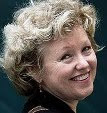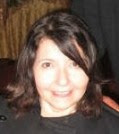 Fate can intervene in numerous ways to inspire a writer. In 1982, I was in the People’s Republic of China conducting research for what would become my dissertation topic—interviewing individuals about their experiences during the Cultural Revolution, 1966-1976. Accompanying me was my mother, who was my greatest asset because she served as translator, confidante, supporter, and companion.
Fate can intervene in numerous ways to inspire a writer. In 1982, I was in the People’s Republic of China conducting research for what would become my dissertation topic—interviewing individuals about their experiences during the Cultural Revolution, 1966-1976. Accompanying me was my mother, who was my greatest asset because she served as translator, confidante, supporter, and companion. The trip itself was made possible because my mother was able to reconnect with her best friend from the American Episcopalian missionary school she attended from 1929-1935. Through her, we obtained housing in Beijing, entrée into a factory where I was able to interview women workers, and access to resources (cars, telephone, a refrigerator, a housekeeper) that ordinary citizens did not enjoy. Suddenly, the stories that I was weaned on were no longer about a distant past with which I had no connection. I was in my “homeland.” Wherever we traveled in China, my mother had a story or a bit of history to relate. And there was always someone who had attended St. Hilda’s School for Girls in Wuchang, China. There would be reunions, dinners, and reminiscences about life in St. Hilda’s. As I listened, and fortuitously taped, I decided to do something with the stories I was gathering. This information would become the basis of the book, Foreign Exchange: Counterculture behind the Walls of St. Hilda’s School for Girls, 1929-1937 (Bethlehem, PA: Lehigh University Press; distributed by Rowman & Littlefield Publishing Group, New York, 2011. ISBN: 978-1-61146-004-9, 260 pages) that was just released on April 8th—the date of my 61st birthday!
The book is three tales in one. The first tale is about my mother’s experiences at St. Hilda’s and the circumstances that led her to attend the school. It provides a glimpse into the life of privilege that existed among traditional wealthy Chinese families. While these tales frequently serve as the basis of stories by fiction writers, they are not typically employed by academic scholars. Although numerous stories have been written about the missionary experience in China, this book was published because it provides the first account of the impact of missionary education from a Chinese student’s perspective.
The second tale is the result of another twist of fate. It is one of those “small world” stories as to how I met Dorothea Kingsley Wakeman Howe, a major player in this book, in March 1997. As part of the University of San Diego’s commitment to the community, it offers lectures by professors to local groups. As part of this so-called “Invisible University” program, I decided to give a talk about my on-going research concerning St. Hilda’s School for Girls in Wuchang. Brochures were printed and distributed, and a week after these brochures had been mailed, I received a voice-message on my phone. The call was from the recreational director at a local senior citizens’ residential facility informing me that a woman living there was “a teacher at the school during the exact time I was speaking about.” A telephone number was left so that I could learn more about this woman. From this telephone call, arrangements were made to have all of us meet during my presentation. At the presentation at the Vista Library, I met Dorothea, and I made arrangements to interview her. That fall, I was also scheduled for my sabbatical, and I used that time to make regular visits to see Dorothea. From that chance meeting in 1997 until her death in 2001, I would visit Dorothea regularly and hear her stories about what she considered to be “the best experience of her life.” During that time, my mother would come and stay with Dorothea, and the two would spend days reminiscing about their lives.
Dorothea was a social historian’s dream because she kept diaries, letters, photographs, and files of her life. As a young woman coming of age during the Great Depression, she was still able to obtain a college education which led her to becoming a teacher at St. Hilda’s from 1933-1937. While in China, Dorothea dutifully wrote letters home which her parents then kept and had bound into four volumes, “Letters from China and Around the World.” When Dorothea died in 2001, her two surviving children honored me beyond words by giving me the four volumes, pictures, and other personal artifacts of their mother. The reason? Her daughter, Cathy, wanted to thank me for making their mother’s last four years so meaningful. My trips to visit Dorothea often overlapped with Cathy’s visit, and we spent time chatting as well. I was not treated as the “researcher,” but as Dorothea’s friend who happened to be a researcher. Her story and the reasons why she went to China are told in the book.
The final tale is a history of St. Hilda’s School for Girls starting with its humble beginnings in 1875 through its emergence as one of the Episcopal Church’s China Inland Missions’ most important girls’ school. This history of the school is the first complete, written history of the school. The school became Wuchang Number 25 Middle School in 1952 when the communists took control over all foreign educational institutions. What was once the chapel is the last remaining remnant of St. Hilda’s on the original school grounds.
The fact that it has taken nearly thirty years to complete this project says a great deal about the scholarly enterprise and the difficulty of “letting go”. While I can attribute some of the length of time to complete this work as a result of teaching and administrative responsibilities or to the time it takes to conduct archival research, those explanations are only partial true. Because this research was personal as well as professional, the fact that this story was also about my mother adversely affected me. I felt that it had to be “perfect”. Only when other writers such as the women in the San Diego Writing Women group helped me realize that my desire for perfection was paralyzing me, did I actually complete the book.
My mother is still alive, and to her, I can finally pay tribute. The stories about her life continue to come, and I continue to write them down. At 98, she still has a lot of stories to tell, and I still want to hear them. My mother would often say two things to me while I was growing up. One, she told me that her mother would say to her, “I hope you have a willful, stubborn daughter just like you,” and second, in utter exasperation, “Why don’t you ever listen to what I say.” To my grandmother, I can state that her wish came true. To my mother, I can state, “Not only did I listen, but I listened well.” This book is my proof.
Judith Liu












1 comments:
Congratulations, Judy!
Post a Comment